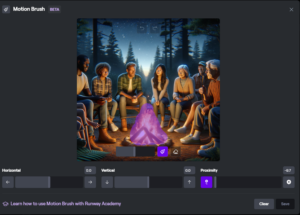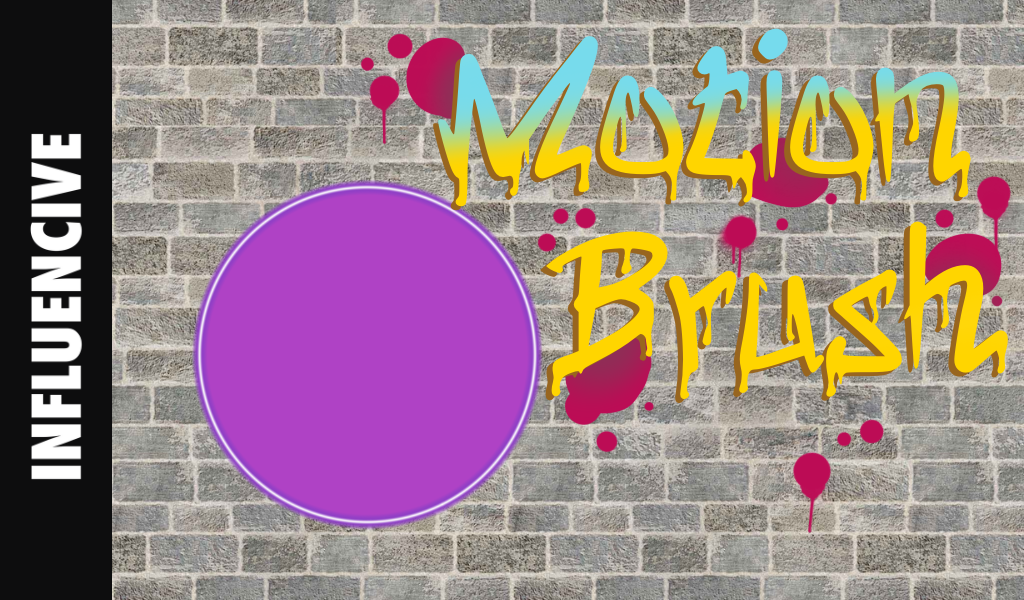Exploring the Innovative Motion Brush Feature in Runway’s AI Generator
In the ever-evolving world of AI-powered creativity, Runway’s latest feature, Motion Brush, stands as a groundbreaking advancement. This innovative tool transforms the way artists and designers interact with image-to-video generation. The Motion Brush feature introduces an unprecedented level of control and precision, allowing users to select specific parts of their images in which they want movement.
The Magic of Motion Brush
At its core, the Motion Brush tool in Runway’s AI generator is designed for intuitive use. It enables creators to select areas of an image and animate it with simple brush strokes and control inputs. This selective animation approach allows for a more refined and targeted movement, bringing a new dimension of creativity to static images.
Enhanced Control and Flexibility
One of the most significant advantages of Motion Brush is the enhanced control it offers. Unlike traditional animation methods that require extensive time and expertise, Motion Brush simplifies the process. Users can easily dictate the movement within an image, controlling the direction, intensity, and speed of the video. This feature is especially beneficial for creators looking to add subtle movements to specific elements, such as animating the leaves of a tree while keeping the rest of the scene static.
Test
With that said, let’s test Motion Brush on some different images and see what kind of effects we can get with it.
Image-to-Video #1
For this image, I only selected the fire and kept the horizontal and vertical controls set to 0.0 because I didn’t want the fire to actually move in any direction, I just wanted to animate it. It did a fairly good job of only animating the fire, but some of the people were still moving and the color of the image definitely starts to change in the video, with some morphing toward the end of the clip. But the fire is definitely the most pronounced animation.


Image-to-Video #2
I love how this one turned out, especially because I wasn’t sure if the head would lift out of the rock – but it did! I only highlighted the head and gave it a horizontal right input combined with a zoom-out input. It almost turned the 2-D image into a 3-D image. You can see the additional layers added to the rocks in the lower left corner – very cool!


Image-to-Video #3
In this one, I wanted the clouds to move left and the camera to move up, so I highlighted the clouds and gave them a horizontal left input, and then gave the camera a vertical up input. This is somewhat of a re-creation of the demos that Runway put out when they launched Motion Brush, so I just wanted to see if I could capture the same type of movement. I also really like how this one came out.


Image-to-Video #4
For the last test, I wanted to see how Motion Brush handles vertical up movement with no other camera inputs. So what better object to test than a balloon among many other balloons? I only highlighted one of the balloons and gave Motion Brush a vertical-up input with no camera movement. This might be my favorite generation because it didn’t move the other balloons at all, which is very impressive considering the red balloon basically floats right into them.


The Motion Brush feature in Runway’s AI generator is more than just a tool; it’s a gateway to uncharted creative territories. It empowers creators to add a layer of dynamism to their work, effortlessly blending the realms of static and moving images. Whether you’re a professional designer, an aspiring artist, or a content creator, Motion Brush offers an easy-to-use platform to breathe life into your visions. Embrace this innovative technology and watch as your artistic expressions take on a new, captivating form.
Cheers!
This is a Contributor Post. Opinions expressed here are opinions of the Contributor. Influencive does not endorse or review brands mentioned; does not and cannot investigate relationships with brands, products, and people mentioned and is up to the Contributor to disclose. Contributors, amongst other accounts and articles may be professional fee-based.

